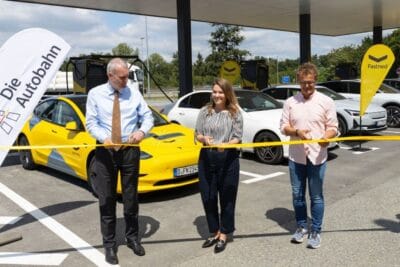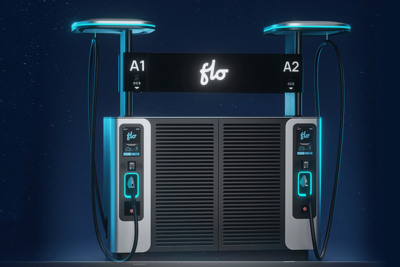Tritium presents Plug and Charge without cards or keys
Australian fast-charging station manufacturer Tritium has launched its Plug and Charge solution. The technology leverages the ISO15118 standard and enables an electric vehicle and charger to communicate. Payments are authorised directly from the driver’s account without the need for a card or RFID tag.
Tritium says that this technology is the first of its kind to reach the market allowing drivers to approach a charger, irrespective of the charging network operator, and to have their charging session automatically and securely billed from the moment the plug connects to their vehicle.
“This firmly and irreversibly tips the convenience scales to the recharging experience over the refuelling experience,” said James Kennedy, Chief Technology Officer and co-founder, Tritium. He surmised that “There is no more need for a membership card or even to swipe a bank card at a terminal; this is the first and most secure iteration available to the market and, once deployed to critical mass, will render any former payment process as archaic.”
The Tritium CEO insists that the Tritium Plug and Charge solution is more secure than the use of cards to swipe or RFID tag payment methods. “A third party, such as Hubject – which provides an automated and secure data exchange enabled by ISO 15118-conforming Public Key Infrastructure – is responsible for cryptographic certifications between the vehicle and the charger, and our technology ensures we are securely storing cryptographic keys on the charger side in a way that other chargers can’t,” he said. “You’re more likely to lose a card and have someone swipe it somewhere than by someone being able to access account details via our Plug and Charge technology.”
Tritium explains that electric vehicles will also need a way to secure the vehicle -side cryptographic key which they say will become commonplace with emerging models. “The vehicles will need to have the storage technology built in, in much the same way as paying for something with your smartphone requires NFC technology,” said Kennedy. “Once that becomes the norm, as NFC has, you will see the incidents of Plug and Charge payments skyrocket.”
The new technology from Tritium has been tested with its PK350kW DC High Power Chargers in Germany, as well as extensive tests at the Tritium E-Mobility Innovation Centre in Amsterdam.
Tritium points out that the new system will allow fleet operators to funnel all their charging costs through one system. However, the system cannot be used at any charger yet. Charge point operators will need to enable their chargers to install the technology. Only Tritium’s PK350kW DC High PowerChargersare Plug and Charge-ready. In addition, Tritium’s Plug and Charge will only work with chargers equipped with CCS standard chargers.
For vehicles to use Plug and Charge they will need to have the storage technology built in to ensure the secure storage of the vehicle’s cryptographic key. Tritium says that their Plug and Charge technology will be immediately available to any charge point operator using Tritium’sVeefil-PK DC High Power Chargers within their network. The Australian company says that this can come as a standard inclusion on new chargers or be uploaded to existing chargers.
Source: press release via email





0 Comments